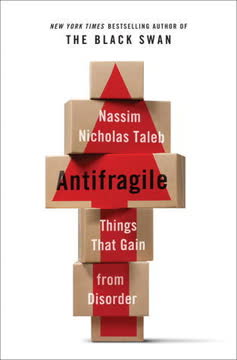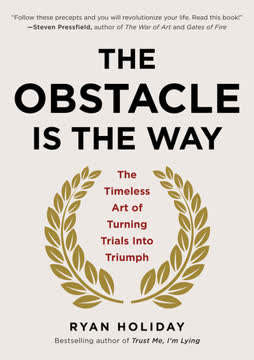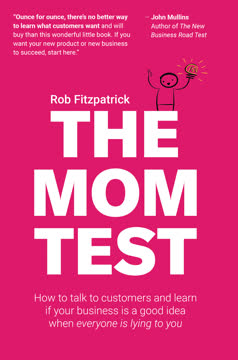Key Takeaways
1. The Architecture of a Sales Letter: A Romantic Metaphor
To be a successful copywriter and enjoy the financial and personal rewards of being at the crest of this tidal wave of growth, you must master the art and science of persuasion.
The romantic metaphor. The book uses an extended metaphor comparing the structure of a successful sales letter to the initiation of a romantic relationship. This comparison helps readers understand the delicate balance of emotion and logic required in effective copywriting. The five essential elements of a sales letter are likened to stages in a romantic encounter:
- The envelope teaser: The opening line at a party
- The sales letter headline: The first impression at the front door
- The lead: The conversation in the foyer
- The body (sales argument): The discussion in the living room
- The close: The final moments before entering the bedroom
This metaphor emphasizes the importance of building trust, creating emotional connections, and providing rational justifications throughout the sales process.
2. The Power of Indirect Teasers in Capturing Attention
Because of its interactive capabilities, the Internet is the perfect medium for direct-response marketing. And because of its low barriers to entry, it is equally perfect for entrepreneurship.
The art of indirection. Indirect teasers are more effective than direct ones in capturing a prospect's attention and interest. They work by:
- Creating curiosity without immediately revealing the sales pitch
- Diverting the reader's attention to something intriguing
- Reducing psychological resistance to being sold
Examples of effective indirect teasers:
- "What no one can get rich without..."
- "I wonder if you could help me settle a debate?"
- "It's A Lot of Bull! Don't Believe What You've Been Told About Your Health..."
These teasers pique curiosity and engage the reader without immediately triggering sales resistance, making them more likely to open the envelope or continue reading.
3. Crafting Headlines and Leads that Stir Emotions
Great sales letters don't tell the customer what to think … or feel … or want. They locate the prospect's feelings, thoughts, and desires, and then stimulate them.
Emotional engagement. The headline and lead of a sales letter are crucial in capturing and maintaining the reader's attention. They should:
- Maintain the attention attracted by the teaser
- Convert that attention into a "diverting" thought process
- State or imply an immediate benefit
- Indirectly promise a deeper benefit
- Identify and defuse any negative thoughts
- Evoke subtle negative feelings to stimulate positive desires
To craft effective headlines and leads:
- Make a list of possible feelings prospects might have about the product
- Identify reciprocal desires for those feelings
- List preconceived ideas prospects might have about the product
- Write multiple leads and test them with colleagues
- Refine the chosen lead until it achieves a high interest score
4. The Core Emotional Complex: Beyond Greed and Fear
There are many useful emotions that can and should be used in writing copy. Greed and fear are two of them — but they are two of the crudest and most common emotions used and, therefore, among the least useful to employ when creating a headline and lead for your sales letter.
Emotional depth. The core emotional complex is a bundle of deeper feelings, thoughts, and desires that motivate prospects. It goes beyond the simplistic greed and fear approach, tapping into more nuanced emotions such as:
- Curiosity
- Desire for altruism
- Loneliness
- Desire for social status
- Exasperation and defeat
To leverage the core emotional complex:
- Identify and address the prospect's deeper feelings and desires
- Avoid directly naming negative emotions
- Use indirect approaches to evoke and address these emotions
- Connect the product or service to the prospect's core desires
By understanding and appealing to this complex, copywriters can create more compelling and effective sales letters that resonate on a deeper level with their audience.
5. Building a Compelling Sales Argument
The sales argument is where you repeat the big promise a dozen different ways, where you break it down into specific claims, where you prove those claims convincingly, where you introduce a big idea (if your sales letter has one), where you employ social proof (i.e., testimonials, endorsements, survey statistics, etc.) to demonstrate credibility, and where you ask and answer every important question your prospect might have about the product.
Logical persuasion. The sales argument forms the body of the sales letter, where you provide rational justifications for the emotional connection established in the lead. Key components include:
- Promises: Big and small, direct and implied
- Claims: Statements that support your promises
- Proof: Evidence that makes the claims believable
Types of proof:
- Scientific studies
- Logical arguments
- Expert quotes
- Compelling facts
- Testimonials
- Analogies
To create a strong sales argument:
- Articulate the product's unique selling proposition (USP)
- Present a variety of proofs in a natural, non-linear way
- Ensure every promise and claim is supported by proof
- Address potential questions and objections
6. The Art of Closing: Sealing the Deal with Finesse
With every step up the stairs to the bedroom, you can feel her heart beating faster. You know that she is ready — that you could rip off her clothes the moment you get to the bedroom door. But that's not what you are going to do. Because there is something you haven't told her.
The final push. The close is the critical moment where you convert the prospect's emotional and logical agreement into action. Key aspects of an effective close:
- Address any residual skepticism or fear
- Create a sense of urgency
- Reinforce the benefits and value proposition
- Make the offer clear and compelling
- Provide a smooth transition to the order process
Techniques for closing:
- Use a false close to address final objections
- Offer a risk-free guarantee
- Include a time-limited bonus or discount
- Emphasize scarcity or exclusivity
- Provide social proof of others' satisfaction
Remember, the goal is not just to make a sale, but to leave the prospect feeling delighted with their decision to buy, setting the stage for a long-term customer relationship.
7. Mastering Copywriting: A Path to Financial Success
To be a successful copywriter and enjoy the financial and personal rewards of being at the crest of this tidal wave of growth, you must master the art and science of persuasion. And there is no better or faster way to do that than to learn how to write a good, simple sales letter.
Career advancement. Mastering the art of copywriting, particularly in writing effective sales letters, can lead to significant financial rewards and career opportunities. Key steps to success:
- Learn the fundamentals of sales letter structure
- Practice writing compelling teasers, headlines, and leads
- Develop a deep understanding of the core emotional complex
- Hone your skills in crafting persuasive sales arguments
- Perfect the art of closing
Benefits of mastering copywriting:
- High demand in the growing direct-response industry
- Potential for six-figure income
- Opportunity to work with diverse clients and products
- Flexibility in work arrangements (freelance, in-house, remote)
- Continuous learning and personal growth
To excel in copywriting:
- Study successful promotions and analyze their techniques
- Continuously educate yourself on marketing trends and consumer psychology
- Develop a portfolio of diverse and effective sales letters
- Network with other copywriters and industry professionals
- Stay ethical and focus on promoting quality products you believe in
By mastering these skills and approaching copywriting as both an art and a science, you can position yourself for a rewarding and lucrative career in the dynamic field of direct-response marketing.
Last updated:
FAQ
What's "The Architecture of Persuasion" about?
- Sales Letter Focus: "The Architecture of Persuasion" by Michael Masterson is a guide on writing effective sales letters. It emphasizes the importance of structure and persuasion in direct-response marketing.
- Five-Step Formula: The book introduces a simple five-step formula for crafting sales letters that have generated millions in sales.
- Metaphorical Approach: Masterson uses an extended metaphor comparing writing a sales letter to initiating a romantic relationship, making the content engaging and relatable.
- Copywriting Mastery: It aims to transform readers into master copywriters by teaching them how to write compelling and persuasive sales letters.
Why should I read "The Architecture of Persuasion"?
- Proven Techniques: The book offers time-tested techniques that have been used to generate significant sales and launch successful businesses.
- Comprehensive Guide: It covers every aspect of writing a sales letter, from the envelope teaser to the closing copy, ensuring a thorough understanding of the process.
- Practical Application: Readers are encouraged to practice the techniques, making it a hands-on guide for improving copywriting skills.
- Career Advancement: Mastering the art of sales letters can lead to a rewarding career in copywriting, with opportunities for financial success.
What are the key takeaways of "The Architecture of Persuasion"?
- Five Essential Elements: The book outlines five key elements of a sales letter: the envelope teaser, headline, lead, sales argument, and close.
- Emotional Connection: Establishing an emotional connection with the reader is crucial for persuasion and long-term customer relationships.
- Core Emotional Complex: Understanding the prospect's core emotional complex is essential for writing compelling copy that resonates with the audience.
- Indirect Approach: Using indirect methods in headlines and leads can prevent the reader from categorizing the letter as junk mail, increasing engagement.
What is the "core emotional complex" in "The Architecture of Persuasion"?
- Definition: The core emotional complex is a bundle of the prospect's deeper feelings, thoughts, and desires tied together with an emotional cord.
- Importance: Understanding this complex allows copywriters to connect with the prospect on a deeper level, making the sales letter more compelling.
- Application: Copywriters should identify the core emotional complex before writing, using it as a foundation for the teaser, headline, and lead.
- Emotional Resonance: By tapping into these emotions, the sales letter can evoke a strong response, leading to higher conversion rates.
How does Michael Masterson use metaphors in "The Architecture of Persuasion"?
- Romantic Metaphor: Masterson compares writing a sales letter to initiating a romantic relationship, making the process relatable and engaging.
- Step-by-Step Comparison: Each part of the sales letter is likened to stages in a romantic encounter, from the initial meeting to the consummation of the relationship.
- Illustrative Examples: This metaphor helps illustrate complex concepts in a simple and understandable way, aiding in the reader's comprehension.
- Engagement: The metaphor keeps readers engaged, making the learning process enjoyable and memorable.
What are the five essential elements of a sales letter according to "The Architecture of Persuasion"?
- Envelope Teaser: Its purpose is to get the prospect to open the envelope with the right expectations, avoiding the trash.
- Headline: The headline should reinforce the teaser and draw the reader into the letter with the right emotional expectations.
- Lead: The lead is crucial for maintaining attention and converting it into a desire to read more, often accounting for 80% of the letter's power.
- Sales Argument: This section presents benefits, claims, and proof, convincing the prospect that buying the product is the rational choice.
- Close: The close aims to eliminate any remaining skepticism, ensuring the prospect feels delighted with their decision to buy.
What is the "false close" technique in "The Architecture of Persuasion"?
- Definition: The false close is a technique where an additional, unexpected benefit is introduced at the end of the sales argument before asking for payment.
- Purpose: It surprises and delights the customer, reinforcing their decision to buy and enhancing the perceived value of the offer.
- Relationship Building: The false close signals that the customer can expect future surprises, fostering a positive long-term relationship.
- Implementation: It can be as simple as saying, "But wait, there's more!" or creating tension before revealing the extra benefit.
How does "The Architecture of Persuasion" suggest handling negative emotions in sales letters?
- Indirect Approach: Negative emotions should be addressed indirectly to avoid triggering denial or resistance from the prospect.
- Subtle Prompts: Use subtle psychological prompts to lead the prospect to acknowledge their feelings and desires without naming them directly.
- Positive Framing: Frame the conversation in a way that allows the prospect to feel they are discovering solutions on their own.
- Emotional Connection: This approach helps maintain an emotional connection, making the prospect more receptive to the sales message.
What is the "strategy of indirection" in "The Architecture of Persuasion"?
- Definition: The strategy of indirection involves presenting benefits in an unexpected way, preventing the prospect from categorizing the letter as junk mail.
- Purpose: It keeps the prospect engaged by creating curiosity and avoiding direct sales pitches that may trigger resistance.
- Application: Indirect teasers, headlines, and leads are used to divert the prospect's attention, leading them to the sale without overtly selling.
- Long-Term Benefits: This strategy can lead to deeper customer relationships and higher lifetime values, as it builds trust and engagement.
What are some effective teaser types mentioned in "The Architecture of Persuasion"?
- Narcissistic Teaser: Focuses on boasting about the product, often less effective as it ignores the reader's needs.
- Potential Benefit Teaser: Highlights a future benefit the reader might gain, creating interest and engagement.
- Definite Benefit Teaser: Promises a direct and immediate benefit, often more compelling than potential benefits.
- Indirection Teaser: Uses an indirect approach to pique curiosity and lead the reader to the sales letter without overtly selling.
How does "The Architecture of Persuasion" suggest creating high perceived value in the close?
- Comparison Technique: Compare the product to a similar, higher-priced product to establish a high perceived value.
- Drop-in-the-Bucket: Show that the fee is minimal compared to the value or returns the product generates.
- Totaling Values: Offer a package with multiple components, each assigned a dollar value, to demonstrate overall value.
- Liquidating Bonus: Provide a tangible bonus with a retail value equal to the product's price, making the offer irresistible.
What are the best quotes from "The Architecture of Persuasion" and what do they mean?
- "Writing sales letters is like playing the piano. Easy to do poorly; extremely difficult to do well." This highlights the complexity and skill required to craft effective sales letters.
- "Business should not be like war. It should be like love." Masterson emphasizes the importance of building positive, long-term relationships with customers rather than using aggressive tactics.
- "The core emotional complex is the cluster of feelings, thoughts, and desires she has when she encounters your sales letter." This underscores the need to understand the prospect's emotions to create compelling copy.
- "The false close is used to surprise and delight the customer." It illustrates the technique of adding unexpected value to reinforce the customer's decision to buy.
Review Summary
The Architecture of Persuasion receives mostly positive reviews, with readers praising its clear, concise approach to copywriting. Many find it valuable for structuring sales arguments and appreciate the use of metaphors and storytelling to convey concepts. Some readers consider it a must-have reference for copywriters, while others view it as a high-level overview. A few criticize the seduction analogy and feel the book lacks depth. Overall, readers appreciate the practical insights and find the book helpful for improving their copywriting skills.
Similar Books










Download PDF
Download EPUB
.epub digital book format is ideal for reading ebooks on phones, tablets, and e-readers.









